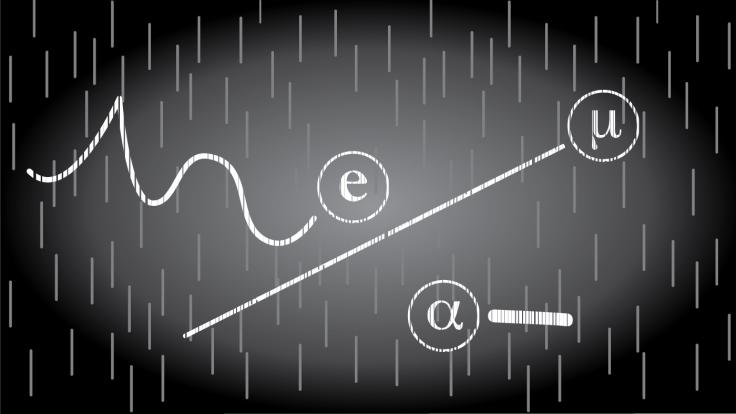This morning, the Nobel Prize in Physics was awarded to three researchers who made advances in optical technologies. Charles Kao won the half the prize for leading the search for development of optical fibers that could transmit information over large distances. Willard Boyle and George Smith shared the other half for their development of charge-coupled devices, or CCDs, the sensors that lie in digital cameras.

Design of the LSST camera, current as of Nov 2007. The LSST camera is designed to provide a wide field of view with better than 0.2 arcsecond sampling and spectral sampling in five or more bands from 400nm to 1060nm. The image surface is flat with a diameter of approximately 64 cm. The detector format will be a circular mosaic providing over 3 Gigapixels per image. The camera includes a filter mechanism and, if necessary, shuttering capability. The camera is positioned in the middle of the telescope. (Image credit: LSST Corporation)
At symmetry, we are particularly interested in CCDs as they lie behind an upcoming telescope that will lead to a huge step in our understanding of dark matter and dark energy. The Large Synoptic Survey Telescope, or LSST, physically located in Chile, will rapidly scan the sky making the most detailed maps of stars and galaxies ever created. It will be capable of detecting extremely faint objects and so will be looking further into the distance than any other telescope mapping the whole sky, while also observing small, fast-moving, nearby objects.
The telescope is made of a set of optics to collect and focus the light and a CCD camera to collect that light. The CCD camera design and construction is being led by the Kavli Institute for Particle Astrophysics and Cosmology at SLAC National Accelerator Laboratory and Stanford University. It will be the largest CCD camera ever made, featuring 3.2 gigapixels, which is 3200 megapixels for comparison with your home digital camera.
The largest existing digital camera is the Panoramic Survey Telescope & Rapid Response System, or Pan-STARRS, camera which has 1.4 gigapixels. The PS1 is the first of four matching telescopes that will be used primarily for detecting potentially hazardous objects in our solar system. It will also be making various astronomical observations. Conversely, the LSST will be used primarily for astrophysics but will also be able to track asteroids and other space hazards.
The basic idea of a CCD is that when photons hit the surface of the device, electrons are released from the material (in a process called the photoelectric effect, for which Einstein won the Nobel Prize), and those electrons collect at the surface. The amount of electric charge that builds up represents how much light hit that spot. After some exposure time, that charge all gets ferried to the side of the detector, in a row-by-row readout mechanism, where it is counted and converted to a string of numbers to form the digital image.

The detailed mass distribution in the cluster CL0024 is shown, with gravitationally distorted graph paper overlaid. This detailed dark matter distribution can be used to constrain theories of dark matter. Observed strong lensing of a background galaxy was inverted to yield a model for the mass distribution. This model was used to calculate the lensing effect on orthogonal graph paper were it placed behind the gravitational lens.
Making large CCDs for astronomical purposes present all kinds of challenges beyond what you need to do for a home digital camera. For a start, any digital camera suffers from electronic noise, where extra electrons pop up and remain as extra charge on the camera surface, as if from a phantom photon. You’ll see some digital cameras advertising their low-noise sensors, talking about this very problem. The issue is much more acute for LSST as the telescope will only be collecting small numbers of photons from many faint sources, so just a few stray electrons can ruin the image. Heat is enough to eject some unwanted electrons so the whole LSST camera needs to be cooled to liquid nitrogen temperatures to reduce noise.
With a camera so large, the time taken to readout the charge build-up becomes an issue. That means the detector is made as a mosaic of smaller elements, all able to be read out at once. Even so, it will still take up to about two seconds to read all the data from an image, about the time it take for the camera to reposition itself for the next image. Dealing with that much data is also a challenge, and the telescope will collect about 30 terabytes of data each night. That puts the data collection needs in the range of many large particle physics projects. Entire new computing systems are being developed for the LSST to handle the data.
With all this data, the LSST will be able to reconstruct the detailed mass distribution in the universe, based on how it bends light during the process of gravitational lensing. From that information, scientists will be able to understand a lot more about the nature and distribution of dark matter and its role in the formation of galaxies and clusters of galaxies. By looking at distant objects, LSST will effectively be looking back in time so it will be able to observe how the universe has evolved, leading to insights about how dark energy has influenced that evolution and giving hints as to what dark energy might actually be.
It’s a long way from some innovative scientists experimenting in their laboratory to understanding the evolution of the universe, but CCDs have become an essential part for a vast range of science, from the microscopic to the cosmic.






